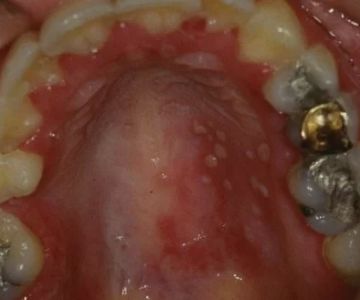
What Diseases Can Be Caused by Oral Sex
Oral sex is a common and intimate activity that many individuals engage in, but like any sexual activity, it carries certain health risks. While it is generally perceived as a safer alternative to vaginal or anal sex, it can still transmit a range of sexually transmitted infections (STIs). In this article, we will explore the diseases and infections that can be caused by oral sex, discuss the risks associated with it, and provide tips on how to reduce those risks. Understanding these health implications is crucial to protecting yourself and your partner(s).
1. Understanding the Risks of Oral Sex
Oral sex, which involves using the mouth, lips, or tongue to stimulate a partner's genitals, can transmit infections just as easily as vaginal or anal sex. This is because mucous membranes in the mouth and genitals provide an ideal environment for viruses and bacteria to enter the body. Additionally, oral sex can expose individuals to the same diseases as other forms of unprotected sex, including HIV, herpes, and syphilis.
1.1 Why Oral Sex Still Poses Risks
The misconception that oral sex is "safe" often leads to individuals neglecting necessary precautions. It’s important to understand that even without penetration, oral sex can still transmit infectious agents. The transmission occurs through contact with bodily fluids, such as semen, vaginal fluids, or blood, which can contain pathogens like viruses, bacteria, and parasites.
2. Diseases That Can Be Caused by Oral Sex
While oral sex is generally considered safer than other sexual activities, it can still lead to several STIs. Here are some of the most common diseases that can be transmitted through oral sex:
2.1 Herpes Simplex Virus (HSV)
Herpes is one of the most common STIs that can be transmitted through oral sex. There are two types of herpes simplex viruses: HSV-1, which typically causes oral herpes (cold sores), and HSV-2, which usually causes genital herpes. However, both types can be transmitted to either the genital or oral areas. Oral sex can spread HSV-1 from the mouth to the genitals and vice versa, leading to outbreaks of painful sores.
2.2 Human Papillomavirus (HPV)
HPV is another STI that can be spread through oral sex. There are many types of HPV, and some can cause genital warts or lead to cancers such as throat cancer. HPV is particularly concerning because it often does not show symptoms, meaning individuals may unknowingly spread the virus to their sexual partners. Vaccination is available for certain high-risk types of HPV, which can help prevent some cancers.
2.3 Gonorrhea
Gonorrhea is a bacterial STI that can infect the genital tract, throat, and rectum. When oral sex is performed on an infected partner, gonorrhea can be transmitted to the throat, leading to a condition known as pharyngeal gonorrhea. Symptoms may include a sore throat, swollen lymph nodes, and difficulty swallowing. However, many individuals with gonorrhea in the throat may not show symptoms, making it important to get tested regularly if engaging in unprotected oral sex.
2.4 Chlamydia
Chlamydia, another bacterial infection, can be transmitted through oral sex, especially when performing oral sex on an infected partner. Just like gonorrhea, chlamydia can infect the throat, leading to symptoms such as sore throat, swelling, and pain during swallowing. As with gonorrhea, many people infected with chlamydia may not show any symptoms, which is why testing and regular screening are essential.
2.5 Syphilis
Syphilis is a bacterial infection that can be transmitted through oral sex. If a person with syphilis has a sore or rash (known as a chancre) in or around their genital area, it can easily spread to their partner’s mouth. Oral syphilis can lead to sores in the mouth or throat, which are highly contagious. If left untreated, syphilis can cause serious complications, including damage to organs like the heart and brain.
2.6 HIV
While the risk of transmitting HIV through oral sex is lower than through vaginal or anal sex, it is still possible. HIV can be transmitted if there are cuts or sores in the mouth, especially if the person receiving oral sex is exposed to semen or vaginal fluids from a partner who is HIV-positive. The risk is higher if the person giving oral sex has bleeding gums, open sores, or cuts in their mouth.
2.7 Hepatitis B and C
Hepatitis B and C are viral infections that affect the liver and can be transmitted through oral sex. The risk is higher if blood is involved, such as during menstruation or if there are any cuts or sores in the mouth. Hepatitis B can be prevented by vaccination, but there is currently no vaccine for hepatitis C.
3. How to Reduce the Risks of Oral Sex
While the risk of contracting diseases through oral sex is real, there are several ways to minimize the risk and stay safe. Here are some important tips for reducing the likelihood of STI transmission during oral sex:
3.1 Use Barrier Methods
Using barrier methods such as condoms or dental dams during oral sex is one of the most effective ways to reduce the risk of STI transmission. Condoms can be used during oral sex on a penis, while dental dams (thin sheets of latex or polyurethane) are used during oral sex on a vulva or anus. These barriers help prevent direct contact with bodily fluids and reduce the risk of infection.
3.2 Get Vaccinated
Vaccination can help protect against certain infections, such as HPV and hepatitis B. The HPV vaccine is highly effective in preventing the strains of the virus that cause genital warts and some cancers, including throat cancer. The hepatitis B vaccine is also important for reducing the risk of this serious liver infection.
3.3 Regular Testing
Regular STI testing is crucial for anyone who is sexually active, especially for individuals engaging in oral sex. Many STIs, such as chlamydia and gonorrhea, can be asymptomatic, meaning that a person might not know they are infected. Testing helps catch infections early and prevents the spread to others.
3.4 Avoid Oral Sex During an Active Outbreak
If you or your partner have an active outbreak of a virus like herpes or syphilis, it is important to avoid oral sex until the sores have healed. This helps prevent transmitting the infection to your partner. Open sores are the primary route for viral transmission, and engaging in oral sex during an outbreak significantly increases the risk of infection.
4. How to Have a Safe Sexual Relationship
Maintaining a safe and healthy sexual relationship requires open communication, mutual respect, and a commitment to health and well-being. Here are a few tips for ensuring your sexual experiences remain safe:
4.1 Open Communication
Having honest conversations with your partner about sexual health is essential. Discuss any potential risks and share your concerns openly. This builds trust and ensures both partners are aware of their health status and comfortable with the precautions being taken.
4.2 Regular Health Check-Ups
Visit your healthcare provider regularly for STI screenings, especially if you have multiple sexual partners or engage in high-risk sexual behaviors. Regular check-ups will help catch infections early and ensure that both partners stay healthy.
4.3 Respect Boundaries and Consent
Consent is the foundation of any sexual relationship. Always respect your partner’s boundaries and ensure that both of you are comfortable with the activities you're engaging in. Protecting each other’s health is part of that consent.
If you're looking for expert dental services or have concerns about oral health, be sure to visit Family Dentistry Online for the best care and advice to maintain a healthy mouth and body.







 Modern Dental3.0 (148 review)
Modern Dental3.0 (148 review) Greencastle Dental4.0 (653 review)
Greencastle Dental4.0 (653 review) Comfort Dental Puyallup - Your Trusted Dentist in Puyallup4.0 (312 review)
Comfort Dental Puyallup - Your Trusted Dentist in Puyallup4.0 (312 review) Little Smiles of Port Washington5.0 (83 review)
Little Smiles of Port Washington5.0 (83 review) Dental Analysis Family Dentistry4.0 (92 review)
Dental Analysis Family Dentistry4.0 (92 review) Preserve Dentistry5.0 (13 review)
Preserve Dentistry5.0 (13 review) The Importance of Oral Health Education During Pregnancy for a Healthy Pregnancy
The Importance of Oral Health Education During Pregnancy for a Healthy Pregnancy Why Skipping Dental Checkups Can Lead to Bigger Oral Health Problems
Why Skipping Dental Checkups Can Lead to Bigger Oral Health Problems Best Tips for Brushing Your Teeth Properly for Healthy Gums: Essential Techniques for Oral Health
Best Tips for Brushing Your Teeth Properly for Healthy Gums: Essential Techniques for Oral Health Advantages of Porcelain Dental Restorations
Advantages of Porcelain Dental Restorations How Can Diabetes Cause Tooth and Gum Problems? Preventing and Managing Oral Health Issues
How Can Diabetes Cause Tooth and Gum Problems? Preventing and Managing Oral Health Issues Healthy Habits for Promoting Good Oral Health and Hygiene: Tips for a Healthy Smile
Healthy Habits for Promoting Good Oral Health and Hygiene: Tips for a Healthy Smile